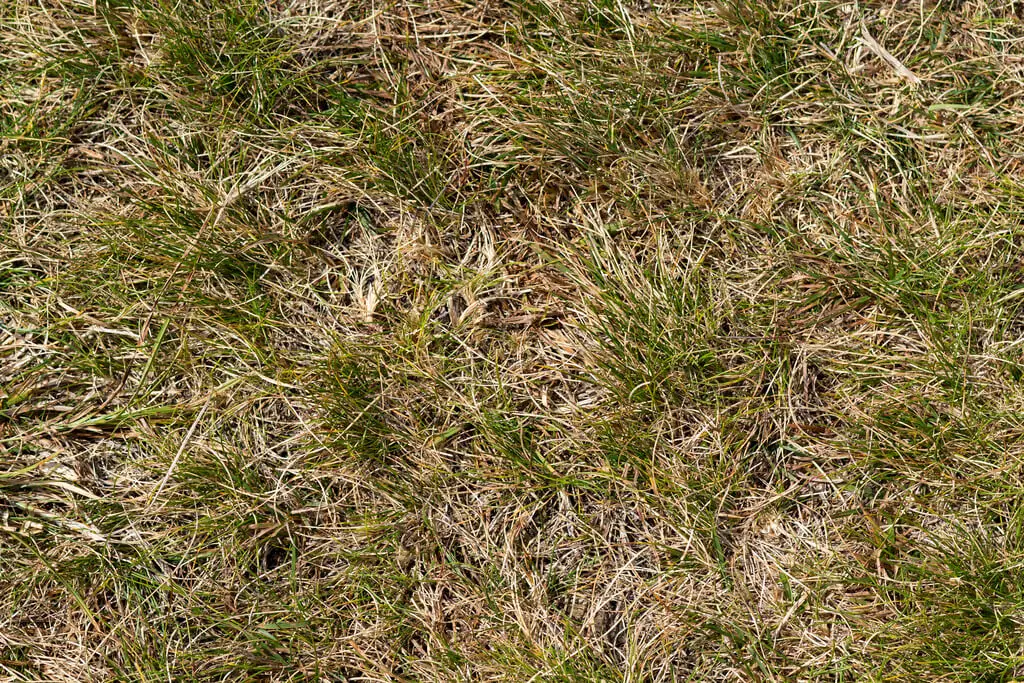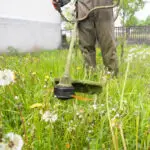When it comes to owning and maintaining a lawn, common lawn diseases are something we all have to deal with occasionally. Luckily the dry climate of southern Idaho helps prevent many of the worst ones faced by other types of climates, but proper lawn care is still necessary.
Stressful environmental factors such as drought, poor irrigation habits, or unhealthy soil are just some of the potential things that can attract pests and disease, and recognizing the symptoms isn’t always a straightforward process since they vary from disease to disease.
In this article, Lawn Master covers some of the most common lawn diseases you’re likely to encounter and some tips on how to avoid them in the future.
Red Thread
One of the common lawn diseases is red thread which is a type of fungus very common in Idaho. Fortunately, it isn’t deadly for the plants and is mainly a purely aesthetic issue. But if your goal is a lush-looking green lawn, here’s how you can recognize and treat it:
- Red Thread shows up as small red or pinkish spots that tend to be small, but in severe cases can grow up to about two feet in diameter. It tends to target cool-season grasses such as fine fescues and perennial rye. Warm-season grass types have a higher resistance.
- While many fungi spread through spores, red thread spreads through mycelium growth and remains dormant in the soil until the conditions are right for it to spread. Excessive thatch and compacted soil increase its likelihood.
- Red Thread can be present in the soil year-round, but usually only becomes an issue in nutrient-deficient soil. Basic lawn care methods such as treating your grass to a nitrogen-rich fertilizer is the best way to treat and prevent its return.
Red thread usually happens in late summer or fall but can occur year-round. However, with premium lawn care, you shouldn’t have any serious issues with this disease.
Rust
Among the common lawn diseases is rust which should not be confused with the type of rust that develops on iron (although it looks similar). Rust starts as irregular yellow patches but eventually develops yellow-orange powder (spores) which cling to everything and spreads with the wind, foot traffic, and insects.
- Rust isn’t a deadly disease but it can definitely slow the growth cycle and weaken plants if left untreated. This then makes the lawn more susceptible to other diseases, pests, weeds, etc. Additionally, it’s ugly and not a good look for your home or business.
- Rust thrives in nutrient-deficient soil like many other diseases, and does especially well in shady areas and lawns with excessive thatch. Wet and humid conditions as well as drought can encourage rust to develop since both conditions place stress on the lawn.
- Rust is more likely to develop on grass that has been wet for prolonged periods of time followed by rapid increases in temperature. Because of this, try to avoid irrigating late at night and aim for between sunrise and 10 am.
- Rust is easily treated and generally doesn’t leave any lasting damage to lawns. The root issue is poor-quality soil, so treating the lawn with a nitrogen-rich fertilizer and keeping the lawn properly hydrated and de-thatched is the most efficient treatment.
Powdery Mildew
Powdery mildew is another common fungus you’re likely to encounter at some point living in Ada or Canyon county. It won’t kill your lawn but it will stress and weaken it, making it more likely to succumb to other diseases and pests.
- Powdery mildew starts off as small, powdery white spots on the plants. Eventually, they grow larger and join together into something that looks similar to powdery fuzz covering the surface of the plants.
- Powdery mildew can occur at any point during the growing season but is extra active in the spring. As daytime temperatures rise above 60, the growths start to produce spores and spread through the air.
- Powdery mildew spreads extremely easily through wind and direct contact, making it more difficult to treat than rust or red thread. After raking infected grass and pruning infected trees, remove the waste material to prevent further infection.
- Powdery mildew prefers shady areas with lower air circulation. Areas in the shade of a building, or sections of lawn under heavy tree or shrub coverage are susceptible. Pruning is an easy fix for increased sun and airflow. Just be sure to dispose of infected planted matter.
If you’ve noticed signs of any of these diseases and are unsure what to do, call Lawn Master at (208) 989-9261 for a consultation. Our qualified experts are happy to restore your lawn to its former glory!



